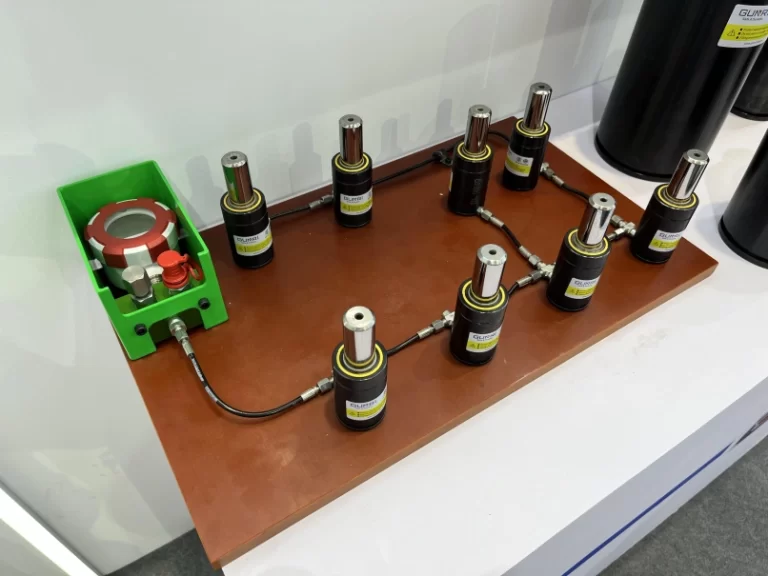What Should Be Considered During Inflation and Exhaust of Nitrogen Gas Springs for Dies?
Nitrogen gas springs are elastic components that use high-pressure nitrogen gas as the working medium. They are widely used in the industrial field, especially in the mold industry, where they can provide elastic pressure for various mold actions, such as ejection, return, cushioning, stripping, etc. However, in order to ensure their normal work and performance, they also need to inflate and exhaust the nitrogen gas from time to time.
Inflating and exhausting nitrogen gas springs for dies is a process of filling or releasing the nitrogen gas from the cylinder through a valve or a screw hole. This can adjust the internal pressure and elastic force of the nitrogen gas springs. Inflating and exhausting can also prevent the nitrogen gas from leaking or exploding due to overpressure or damage.
There are some important points that need to be considered during inflating and exhausting nitrogen gas springs for dies, such as:
The Basic Methods of Inflating and Exhausting
The basic methods of inflating and exhausting nitrogen gas springs for dies are to use a special tool or a wrench to open the valve or the screw hole on the side of the base or on the top of the piston rod, and let the nitrogen gas enter or escape slowly. A pressure gauge or a manometer can be used to measure and adjust the internal pressure of the nitrogen gas spring.
The Taboos of Inflating and Exhausting
There are some taboos that need to be avoided during inflating and exhausting nitrogen gas springs for dies, such as:
- Do not inflate or exhaust under load conditions, as it may damage or explode the nitrogen gas springs.
- Do not use high-pressure gas or other flammable, explosive or volatile substances to inflate, as it may cause accidents. Make sure that the gas used is pure nitrogen.
- Do not inflate when the piston rod is not exposed from the cylinder, as it may damage the spring. Wait until the piston rod is fully extended before inflating.
- Do not inflate or exhaust too fast or too much, as it may cause instability or malfunction of the nitrogen gas springs.
The Safety Measures of Inflating and Exhausting
There are some safety measures that need to be followed during inflating and exhausting nitrogen gas springs for dies, such as:
- Protect the piston rod from scratches or contamination during inflating and exhausting, as it may impair its integrity and cause leakage of nitrogen
- gas. The piston rod should be handled with care and kept clean and dry.
- Do not inflate or exhaust under high temperature or direct sunlight, as it may cause deformation or discoloration of the nitrogen gas springs. The nitrogen gas springs should be stored in a cool and dry place.
- The Exhaust of Waste Nitrogen Gas Springs
- The last point that needs to be considered is the exhaust of waste nitrogen gas springs that are no longer needed or usable. In this case, it is necessary to completely empty the cylinder of nitrogen gas by using a special tool or a wrench to open the valve or the screw hole on the top of the piston rod, and let the nitrogen gas escape quickly. This can prevent environmental pollution and safety hazards caused by residual nitrogen gas.
- In conclusion, inflating and exhausting nitrogen gas springs for dies is an important operation that should be done carefully and correctly. It can affect the performance and life span of the nitrogen gas springs, as well as the quality and efficiency of the mold production. Therefore, it is recommended to follow the instructions and precautions provided by the manufacturer or supplier of the nitrogen gas springs.




